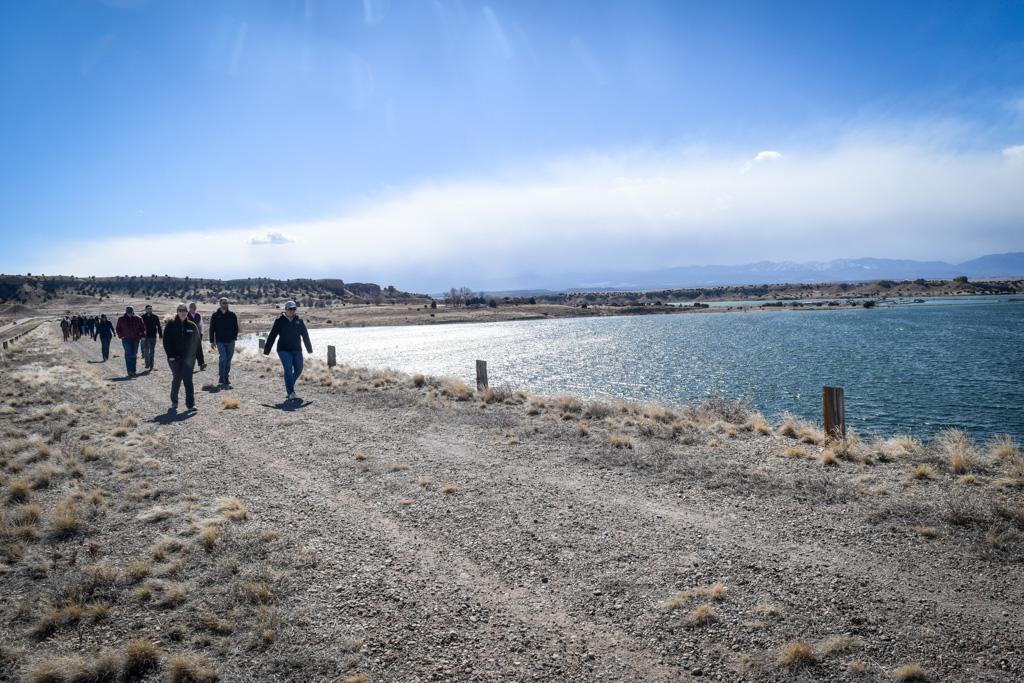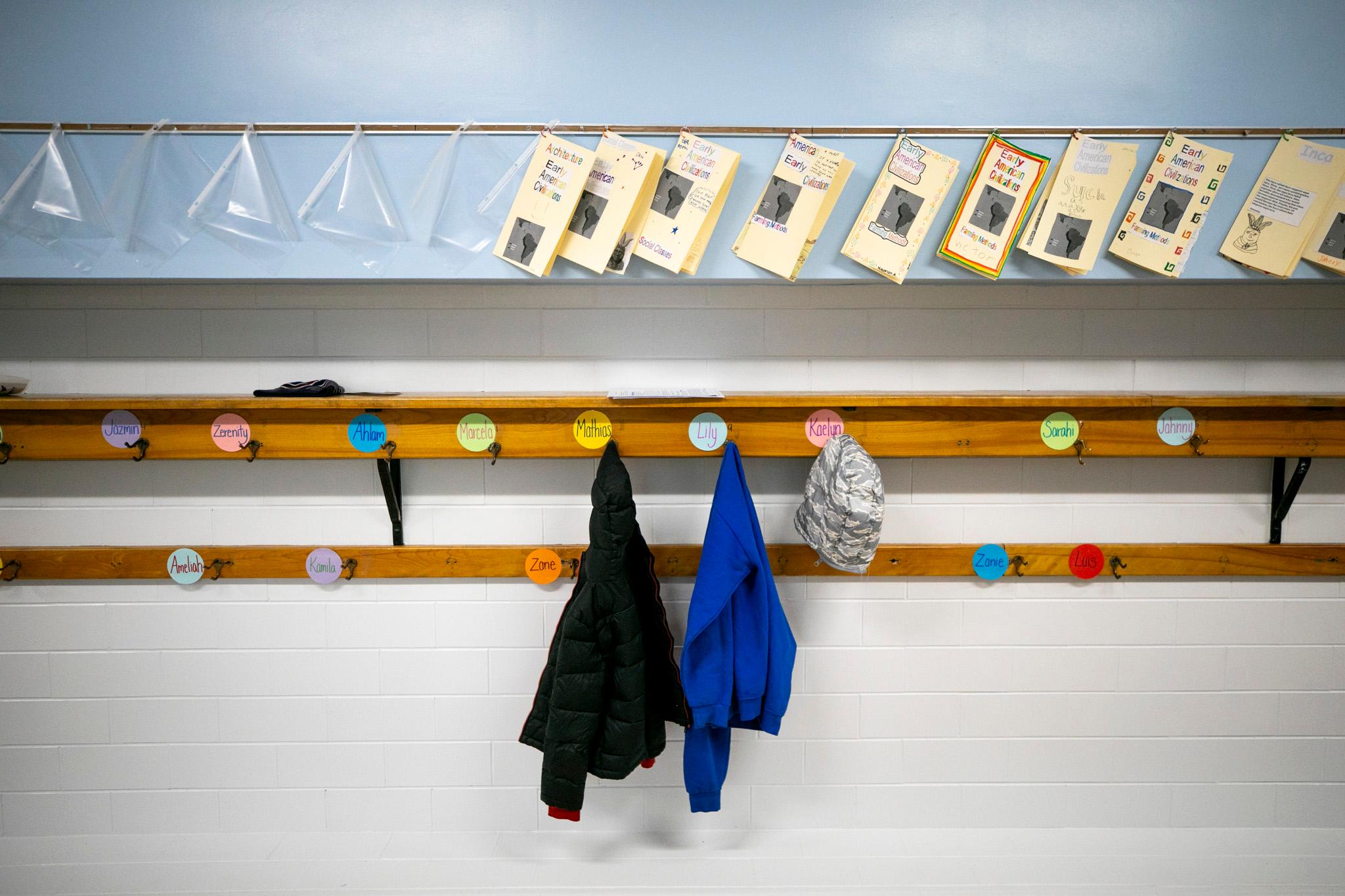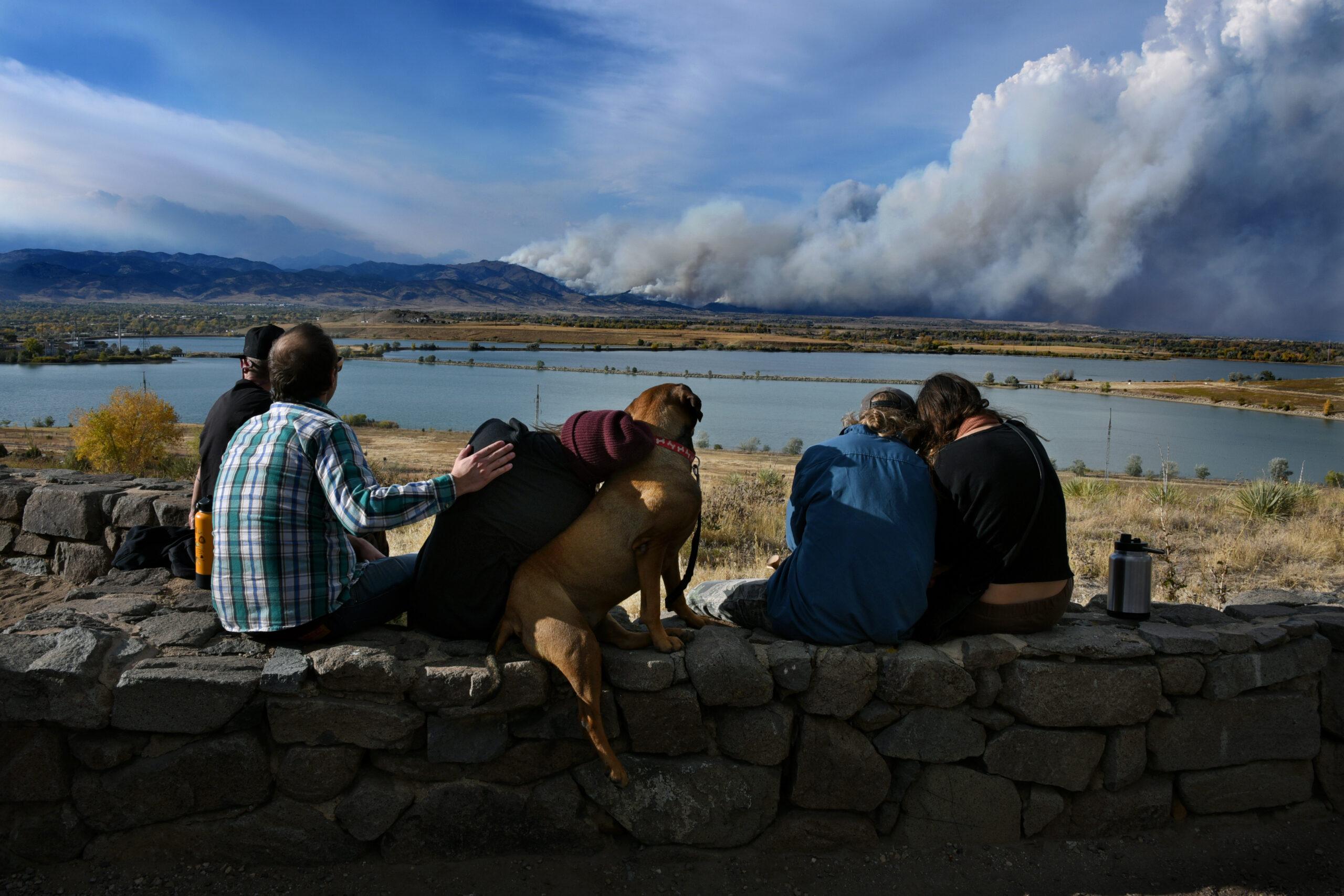
Updated 9:10 p.m., Saturday Oct. 17. Updates for Sunday, Oct. 18, are available here.
A new fire started Saturday in the foothills above Boulder. The Cal-Wood fire quickly led to evacuation orders for the small town of Jamestown and the east and west sides of U.S. 36 north of Boulder. By the evening it had burned 7,064 acres.
It is adding more thick smoke to a region that has been blanketed in smoke and ash for days at a time over the past few months.
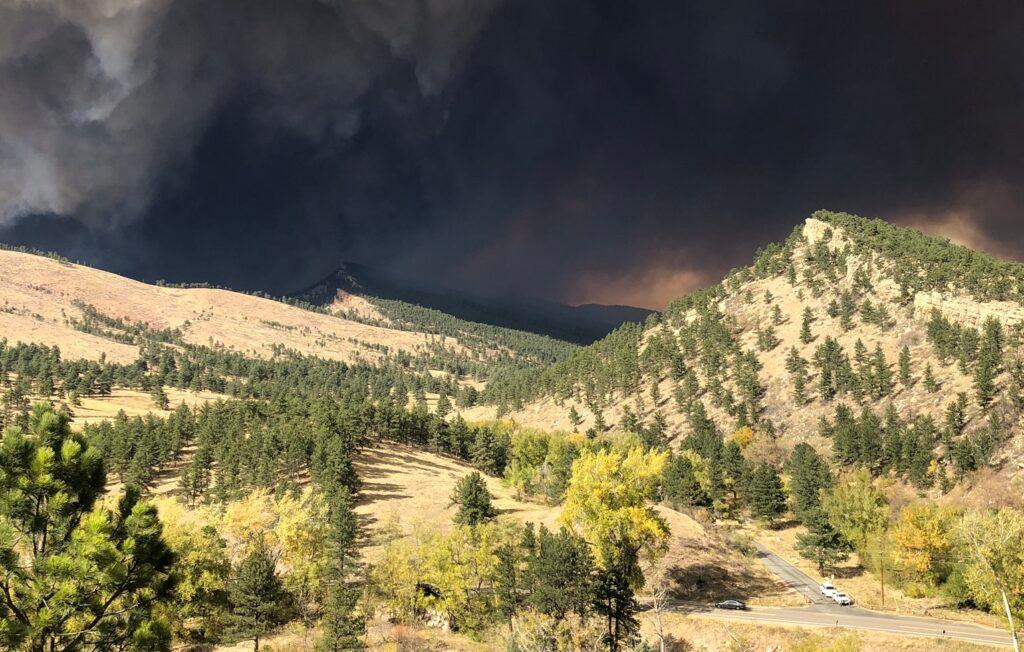
"It was 1:30 this afternoon when I started packing the car," said Shawn Tierney, who evacuated from Jamestown and said he heard a lot of sirens coming up the canyon. "I normally have a bag that’s ready to go anyway, like a lot of people who live in mountain communities. You’re always ready and pray you never have to, but this is one of those times where you pretty much had to leave."
Road closures along Highway 36 north of Boulder, Highway 7 between Lyons and the Peak to Peak Highway, and on Highway 34 from Estes Park prompted CDOT on Saturday afternoon to ask drivers not to take any unnecessary trips around Boulder and Larimer counties.
At the evacuation site set up to serve people fleeing the Cal-Wood fire, Red Cross volunteer Gerry Kelly said they can offer pandemic-appropriate accommodations. "What we’re offering — if there’s a true need, without alternatives — Red Cross will provide hotel rooms for a couple of nights until social services talks to the folks and comes up with a recovery plan."
About 900 homes were in the evacuation zone as of Saturday evening. Emergency managers have advised people in Lyons to be prepared to evacuate in case the fire behavior changes on Sunday.
Daniel Swain is a climate scientist with the Center for Climate and Weather Extremes at the National Center for Atmospheric Research in Boulder.
"As far as I understand, fires of this magnitude this late in the year in Colorado are historically extremely rare, and we have a number of them burning right now, including the one that ignited relatively close to Boulder earlier today."
Swain witnessed the fire spread quickly this afternoon. "Unfortunately there's not a lot that can be done to slow the spread of a very fast-moving wind-driven fire." He said under those conditions, it makes sense to evacuate even before officially being asked to do so.
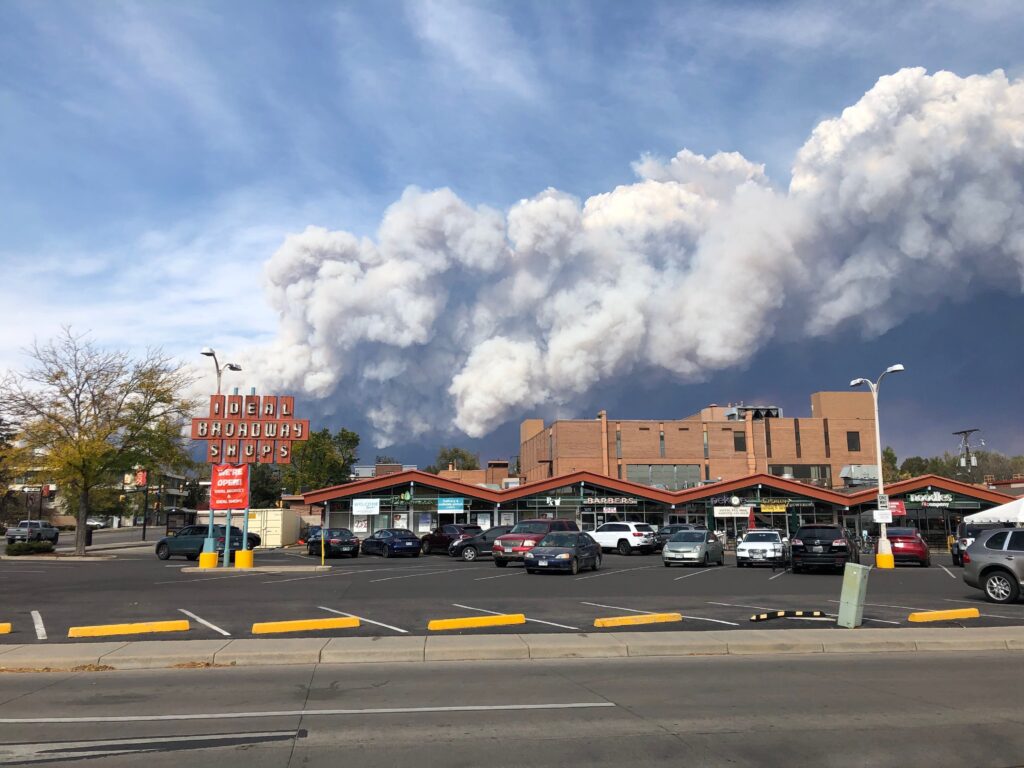
Three other fires were already combining to push giant plumes of smoke along the northern Front Range. The Cameron Peak fire is still the largest. The Mullen Fire, which started in Wyoming, is slightly smaller. The East Troublesome fire, which started this week, has burned 11,239 acres west of Lake Granby.
On Saturday morning, before the Cal-Wood fire broke out, there was already significant smoke visible in the Fort Collins, Longmont and Loveland areas.
The Cameron Peak fire continues to grow on the east side. It grew about 20,000 acres between Friday and Saturday mornings, and by Saturday evening it had grown to just shy of 200,000 acres. A cold front moving into the area Saturday evening, with higher humidity, brought hope the fire growth would slow down.
Firefighters have sprayed suppressant foam on houses in the most vulnerable areas for growth on the southeast side of the Cameron Peak fire. By the end of the day Saturday, Operations Section Chief Paul Demerico said mitigation efforts were "very successful" through the day, though fire managers said there were some structures lost. They said they will have a full accounting of the damage when it is safe to complete assessments.
Crews have come from across the state to the northern Front Range to fight the Cameron Peak and Cal-Wood fires.
Larimer County Sheriff Justin Smith, who has been helping run the response to the Cameron Peak fire, said he is in communication with the Boulder County sheriff about the road closures and the need to figure out a way to evacuate people through Highway 34 if Highway 36 becomes impassible because of the new Cal-Wood fire.
A Red Flag warning was issued for northeastern Colorado on Saturday, given the strong wind, low relative humidity and warm temperatures.
Demerico said these are unprecedented conditions, with very dry fuels combined with the weather that the area is seeing.
Swain, who studies wildfires across the West and especially in California, said Colorado is hardly alone seeing a lot of fast-moving and destructive fires this year. "This summer was exceptionally hot and dry," he said. "Quite a few western states saw their record warmest August, and some places also saw their record warmest September." At the same time, normal summer monsoons and thundershowers never materialized.
The air quality in the Denver and Boulder area is unhealthy and is unhealthy for sensitive groups in Fort Collins, Loveland and Greeley. Kids and elderly people and those with respiratory illnesses should stay inside if the smoke is thick, the Colorado Department of Public Health and Environment advises.
Swain expects prime fire conditions to continue into this next week, but is holding out hope that winds will not be as strong.
CPR's Hayley Sanchez and reporter Meghan Walker contributed to this story.

